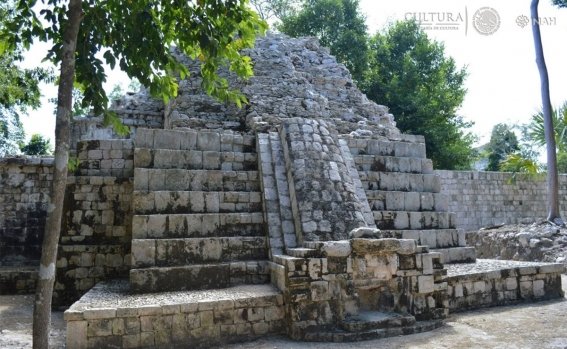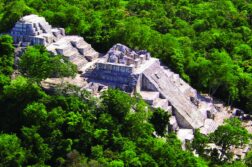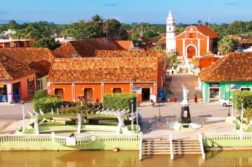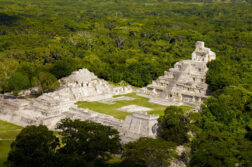This event was discovered by Florentino García Cruz, an independent archaeologist, and apparently it would be more than 300 years old than the Yucatecan archaeological zone.

San Francisco de Campeche.- According to recent research, the Mayan city of Santa Rosa Xtampak registered a phenomenon similar to the descent of the Kukulcán (feathered serpent) that occurs every year in the Mayan area of Chichén Itzá, Yucatán.
This event was discovered by Florentino García Cruz, an independent archaeologist, and apparently it would be more than 300 years old than the Yucatecan archaeological zone, which makes it unique in the entire pre-Hispanic area.
After six years of research, observation, documentation and recording of information, as well as its corresponding verification, García Cruz reported that the phenomenon was recorded with mathematical precision on March 14 and September 20 during the regional equinoxes.
The archaeologist will formally present his finding on Wednesday 10 at the XXXI International Meeting of Mayan Culture Researchers.
He argued that the phenomenon consists of a spectacle of light and shadow that symbolizes the descent of Kukulcán (feathered serpent according to Mayan beliefs), which resembles its descent on the roof of a small temple that originally would have a height of 16 meters.
According to the studies, 13 triangles of light would be formed, but now only four are observed due to the deterioration of the structure, and it reaches its magnitude at 4:40 p.m. in the afternoon, he said.
He announced that on the floor the head of the rattlesnake that represents Kukulcán forms a shadow with a human face in profile with the physical features that characterize this civilization, that is, the deformed forehead, the curvilinear nose and the short chin.
The structure where the phenomenon is recorded was intervened in 2002 by the archaeologist Renee Lorelei Zapata Peraza who named it the Temple of the Centipede Serpent.

He gave it that name because among the elements that compose it, a kind of sculpted legs are observed under what is the stone body.
The in-depth investigation carried out by García Cruz shows that it is not about legs but about the representation of Quetzal feathers with which he reached the conclusion comparing the iconographies of other archaeological sites both in the center of the country, such as the temple of Quetzalcóatl, in Teotihuacan, as in others of the Mayan area and in the various codices the similarity with the phenomenon of light and shadow in Chichén Itzá.
«In Maya, feathers are kuuc and can is serpent, which indicates that the word is Kukulcán, which obviously means feathered serpent,» he declared.
Santa Rosa Xtampak, better known as “Xtampak”, is an ancient Mayan city located in the Northeast of the state territory, in the Los Chenes region, very close to the border with Yucatán. It is accessed by a road of just over 35 kilometers from the old Campeche-Mérida highway “via ruins”. It is a site immersed in the exuberant Campeche jungle and whose buildings are of architectural beauty of various styles.
The now named Temple of Kukulcán is of the Central Yucatán style that is located between the Bec River and Chenes and whose antiquity is dated between 800 to 850 AD, as confirmed by the independent archaeologist.
Translation manager: PATRICIA RUBIO





